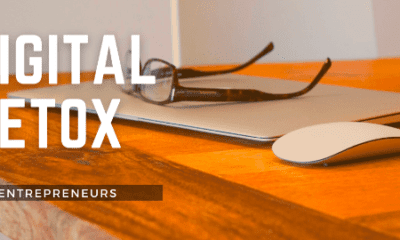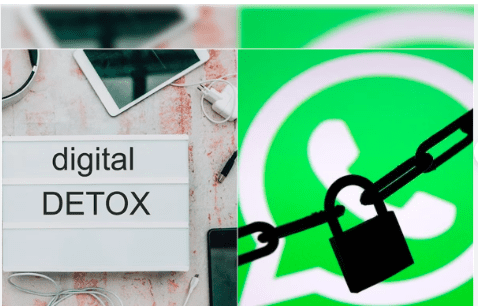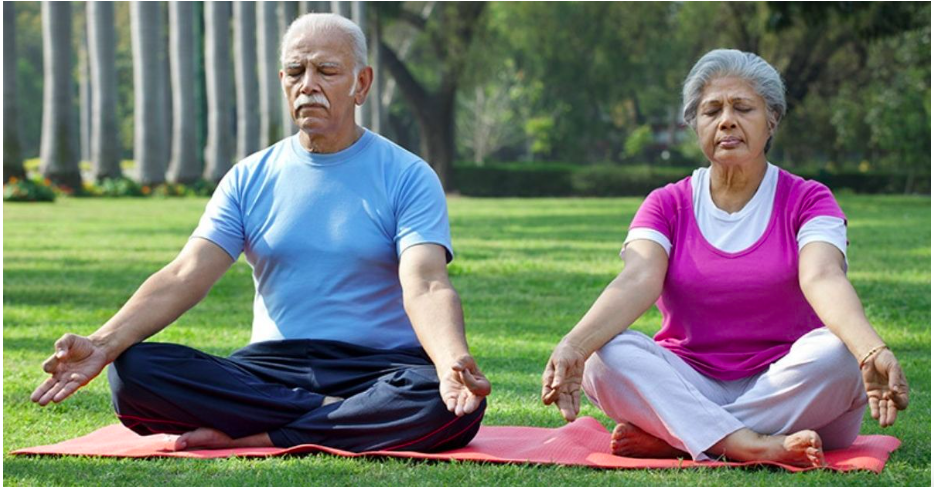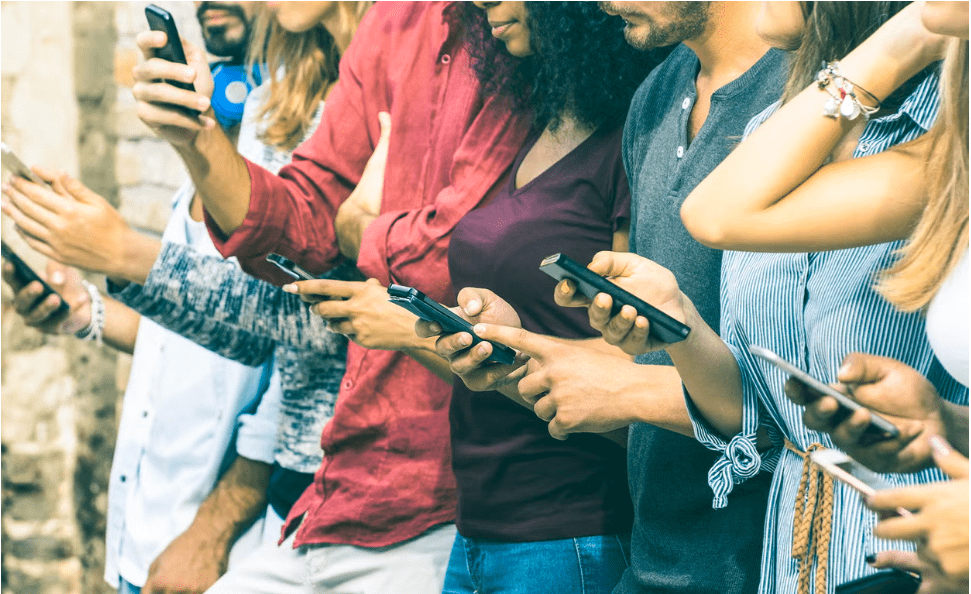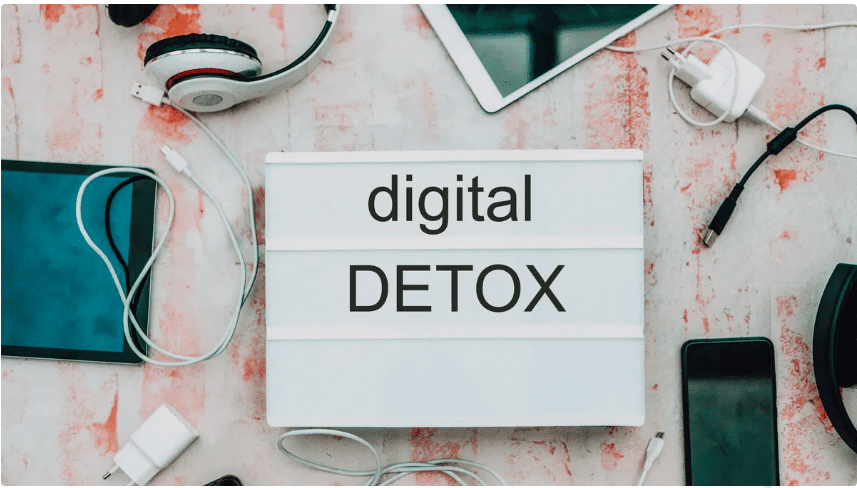Self-improvement
The Benefits of a Digital Detox for Mental Clarity
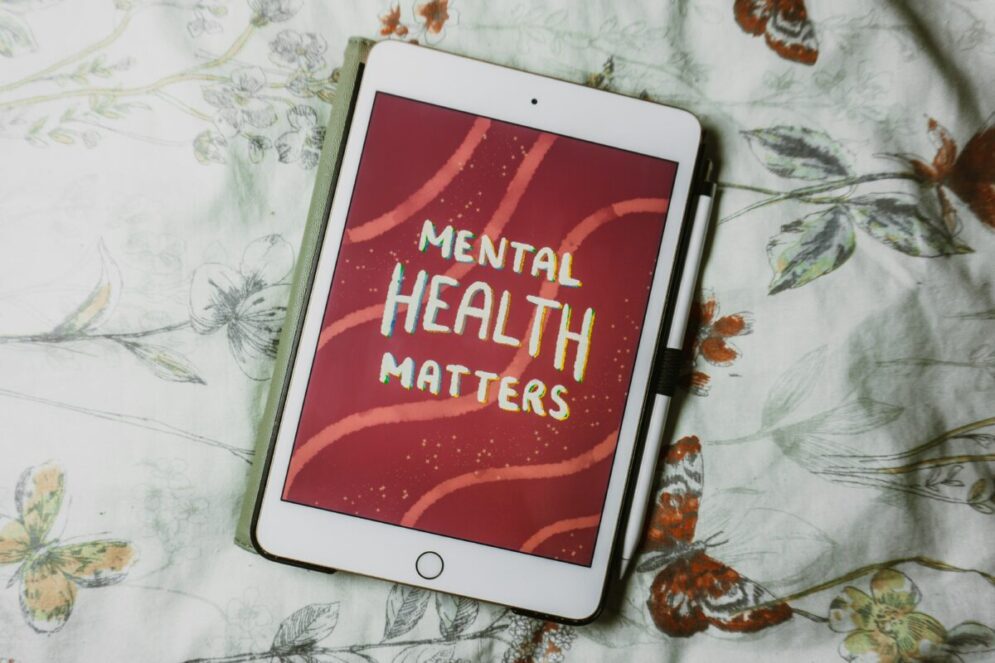
The Benefits of a Digital Detox for Mental Clarity
In today’s fast-paced and technology-driven world, it’s easy to become overwhelmed and constantly connected. Our smartphones, tablets, and computers are constantly vying for our attention, making it difficult to find moments of peace and clarity. This is where a digital detox can be incredibly beneficial for our mental well-being.
What is a Digital Detox?
A digital detox is a period of time where you intentionally disconnect from technology and take a break from screens. This means putting away your smartphone, turning off your computer, and avoiding social media and other digital distractions. It’s a chance to step back, recharge, and reconnect with the world around you.
The Benefits of Taking a Digital Detox
1. Improved Mental Clarity: Constant exposure to screens and digital information can overload our brains and lead to mental fatigue. Taking a digital detox allows our minds to rest and rejuvenate, improving our ability to think clearly and make better decisions.
2. Reduced Stress and Anxiety: The constant notifications and information overload from technology can contribute to increased stress and anxiety levels. By disconnecting from digital devices, we give ourselves a chance to relax and unwind, leading to a reduction in stress and a greater sense of calm.
3. Increased Productivity: It may seem counterintuitive, but taking a break from technology can actually make us more productive. When we’re constantly interrupted by notifications and distractions, our focus and efficiency suffer. By disconnecting, we can fully immerse ourselves in tasks and get more done in less time.
4. Better Sleep Quality: The blue light emitted by screens can disrupt our sleep patterns and make it harder to fall asleep at night. By taking a digital detox before bedtime, we allow our bodies to naturally wind down and prepare for a restful night’s sleep.
5. Enhanced Relationships: Technology has made it easier than ever to stay connected with others, but it can also hinder our ability to truly connect on a deeper level. By disconnecting from screens, we can focus on building meaningful relationships and fostering real-life connections.
Tips for a Successful Digital Detox
1. Set Clear Boundaries: Determine how long you want your digital detox to last and communicate your intentions to friends, family, and colleagues. Let them know that you will be unavailable during this time.
2. Find Alternative Activities: Fill your time with activities that don’t involve screens. Read a book, go for a walk, practice mindfulness or meditation, or engage in a hobby that you enjoy.
3. Create a Technology-Free Zone: Designate a specific area in your home where technology is not allowed. This could be your bedroom, dining room, or any space where you spend a significant amount of time.
4. Use Apps for Accountability: If you find it challenging to disconnect on your own, there are apps available that can help you stay accountable. These apps can track your screen time and provide reminders to take breaks.
5. Start Small: If completely disconnecting feels overwhelming, start with shorter periods of time and gradually increase the duration of your digital detox. This will help you build resilience and make the process more manageable.
Conclusion
A digital detox can have profound effects on our mental clarity and overall well-being. By intentionally disconnecting from technology, we give ourselves the opportunity to recharge, reduce stress, and improve our relationships. So, why not take the plunge and give yourself the gift of a digital detox? Your mind will thank you.
Frequently Asked Questions
1. How long should a digital detox last?
A digital detox can last anywhere from a few hours to several days. It ultimately depends on your personal preferences and goals. Start with a duration that feels manageable for you and gradually increase it over time.
2. Can I still use technology for work during a digital detox?
If possible, it’s best to avoid using technology for work purposes during a digital detox. However, if your job requires it, try to limit your usage to only essential tasks and set clear boundaries for yourself.
3. What are some alternative activities I can do during a digital detox?
There are plenty of activities you can engage in during a digital detox. Some ideas include reading a book, going for a hike, practicing yoga, painting, or spending time in nature.
4. Will taking a digital detox affect my relationships?
While taking a digital detox may temporarily impact your ability to communicate with others digitally, it can actually enhance your relationships in the long run. By disconnecting from screens, you can focus on building deeper connections and fostering meaningful interactions.
5. How often should I take a digital detox?
The frequency of digital detoxes is entirely up to you. Some people find it helpful to take regular, scheduled breaks (e.g., once a week or once a month), while others prefer to take a digital detox whenever they feel overwhelmed or in need of a reset.
6. Can a digital detox help with anxiety and stress?
Absolutely! Taking a break from technology can significantly reduce anxiety and stress levels. By disconnecting from constant notifications and information overload, you give your mind a chance to relax and recharge.
7. How do I resist the temptation to check my phone during a digital detox?
Resisting the temptation to check your phone can be challenging, especially at first. Try turning off notifications, keeping your phone out of sight, or even temporarily disabling certain apps. Engaging in alternative activities that you enjoy can also help distract you from the urge to check your phone.
Self-improvement
The Transformative Power of Mindfulness and Meditation
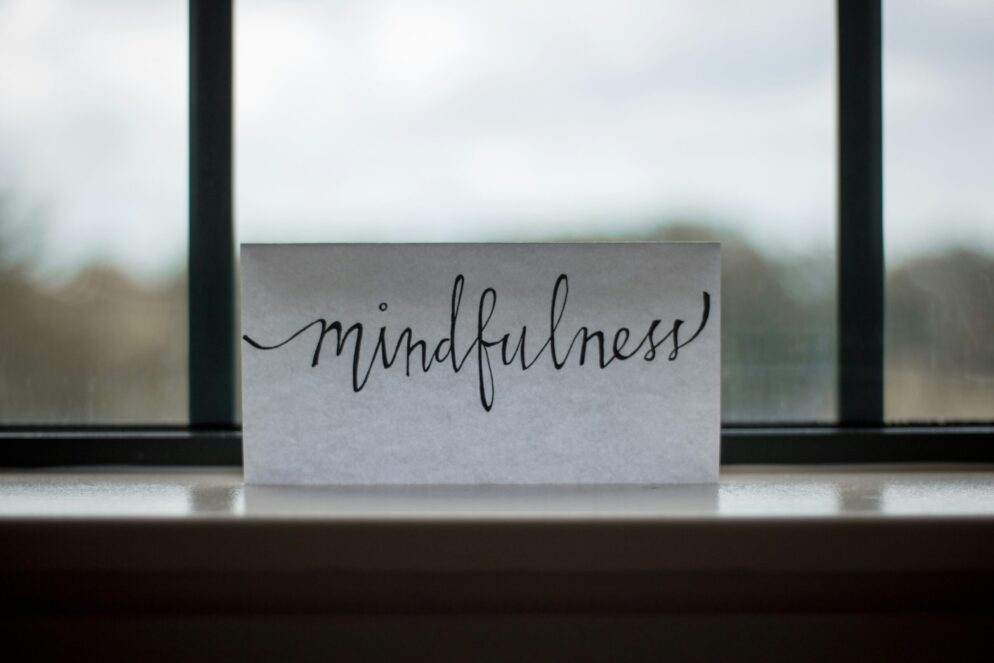
The Power of Mindfulness and Meditation
In today’s fast-paced and hectic world, it’s becoming increasingly important to find moments of peace and tranquility amidst the chaos. This is where the practice of mindfulness and meditation comes in. By incorporating these powerful techniques into our daily lives, we can experience a multitude of benefits for our mental, emotional, and physical well-being.
The Benefits of Mindfulness
Mindfulness is the practice of intentionally bringing our attention to the present moment without judgment. It involves being fully aware of our thoughts, feelings, bodily sensations, and the environment around us. By cultivating mindfulness, we can enhance our overall sense of well-being and lead more fulfilling lives.
One of the key benefits of mindfulness is its ability to reduce stress and anxiety. When we practice mindfulness, we become more aware of our thoughts and emotions, allowing us to respond to them in a calm and non-reactive manner. This can help us break free from the cycle of negative thinking and find a sense of inner peace.
Additionally, mindfulness has been shown to improve our focus and concentration. By training our minds to stay present, we can enhance our ability to stay focused on tasks and improve our productivity. This can be particularly beneficial in today’s digital age, where distractions are abundant.
The Power of Meditation
While mindfulness is about being present in the moment, meditation is a practice that allows us to go deeper within ourselves. It involves sitting in a quiet and comfortable space and focusing our attention on a specific object, such as our breath or a mantra.
Through regular meditation practice, we can experience a wide range of benefits. One of the most notable is its ability to promote relaxation and reduce the symptoms of stress-related conditions. By activating the body’s relaxation response, meditation helps to lower blood pressure, reduce heart rate, and decrease muscle tension.
Meditation has also been found to improve our emotional well-being. It can help us cultivate a greater sense of self-awareness and compassion, allowing us to navigate life’s challenges with greater ease. Additionally, meditation has been shown to enhance our creativity and problem-solving abilities, as it allows our minds to tap into a deeper level of consciousness.
Practical Tips for Incorporating Mindfulness and Meditation
Now that we understand the benefits of mindfulness and meditation, let’s explore some practical tips for incorporating these practices into our daily lives:
- Start with small steps: Begin by dedicating just a few minutes each day to mindfulness or meditation. As you become more comfortable, gradually increase the duration of your practice.
- Create a peaceful space: Find a quiet and comfortable space where you can practice without distractions. Consider adding elements such as candles, cushions, or soft lighting to enhance the ambiance.
- Use guided resources: If you’re new to mindfulness and meditation, consider using guided resources such as apps or online videos to help you get started. These can provide structure and support as you develop your practice.
- Be consistent: Like any skill, mindfulness and meditation require consistent practice to reap the full benefits. Set aside a specific time each day for your practice and make it a non-negotiable part of your routine.
- Be gentle with yourself: Remember that mindfulness and meditation are practices, not goals to be achieved. Be patient with yourself and approach your practice with a sense of curiosity and non-judgment.
By incorporating mindfulness and meditation into our lives, we can cultivate a greater sense of inner peace, improve our well-being, and navigate life’s challenges with greater ease. So why not take a few moments each day to connect with yourself and experience the transformative power of mindfulness and meditation?
Frequently Asked Questions
1. What is the best time of day to practice mindfulness and meditation?
There is no one-size-fits-all answer to this question. The best time to practice mindfulness and meditation is whenever it fits into your schedule and allows you to be fully present. Some people find it helpful to practice in the morning to set a positive tone for the day, while others prefer to unwind with a practice in the evening. Experiment with different times and find what works best for you.
2. Can mindfulness and meditation help with sleep issues?
Absolutely! Mindfulness and meditation can be powerful tools for improving sleep quality. By practicing these techniques before bed, you can calm your mind, release tension, and create a peaceful environment for sleep. Incorporating mindfulness into your bedtime routine can help you unwind and prepare your body and mind for a restful night’s sleep.
3. How long does it take to experience the benefits of mindfulness and meditation?
The benefits of mindfulness and meditation can vary from person to person. Some people may notice immediate improvements in their well-being, while others may take longer to experience the full benefits. Consistency is key. By committing to a regular practice, you can gradually cultivate the positive effects of mindfulness and meditation in your life.
4. Can mindfulness and meditation be practiced anywhere?
Absolutely! One of the great things about mindfulness and meditation is that they can be practiced anywhere. Whether you’re at home, at work, or even on-the-go, you can find moments to pause, connect with your breath, and bring your attention to the present moment. It’s all about finding what works for you and integrating these practices into your daily life.
5. Are there any specific breathing techniques that can enhance mindfulness and meditation?
Yes, there are various breathing techniques that can enhance your mindfulness and meditation practice. One popular technique is deep belly breathing, also known as diaphragmatic breathing. This involves taking slow, deep breaths, allowing your belly to rise and fall with each breath. Deep breathing can help you relax, reduce stress, and bring your focus back to the present moment.
6. Can mindfulness and meditation help with managing emotions?
Absolutely! Mindfulness and meditation can be powerful tools for managing emotions. By practicing mindfulness, we can become more aware of our emotions as they arise, allowing us to respond to them in a more skillful and compassionate way. Meditation can also help us cultivate a greater sense of emotional resilience and regulate our emotions more effectively.
7. Can mindfulness and meditation be practiced by anyone?
Yes, mindfulness and meditation can be practiced by anyone, regardless of age, background, or experience level. These practices are accessible to all and can be tailored to suit individual needs and preferences. Whether you’re new to mindfulness and meditation or have been practicing for years, there are always opportunities for growth and exploration.
In Conclusion
Mindfulness and meditation offer us a pathway to inner peace, self-discovery, and overall well-being. By incorporating these practices into our daily lives, we can cultivate a greater sense of presence, reduce stress, enhance our focus, and navigate life’s challenges with greater ease. So why not embark on this transformative journey and experience the power of mindfulness and meditation for yourself?
-

 Trending Stories1 year ago
Trending Stories1 year agoCDC: 1 in 4 Americans Still COVID-Free by End of 2022
-

 Health5 years ago
Health5 years agoMeghan Trainor Shares Motivational New Song ‘Blink’
-

 Health2 years ago
Health2 years agoHow Long Does Monkey Pox Last Before It Surfaces in the Body?
-

 Health2 years ago
Health2 years agoWhat Causes Swollen Body? Understanding Edema and its Triggers
-

 Health3 years ago
Health3 years agoNutrition and the Importance of a Fitness Program – 3 Things to Know
-

 Health3 years ago
Health3 years ago5 Weird Reasons Why Pimples Disappear After Marriage
-

 Health3 months ago
Health3 months agoHow Do Pawpaw Seeds Support Cardiovascular Health?
-

 Health2 years ago
Health2 years agoHealth Benefits Of Pawpaw Seed? 7 Things To Know

